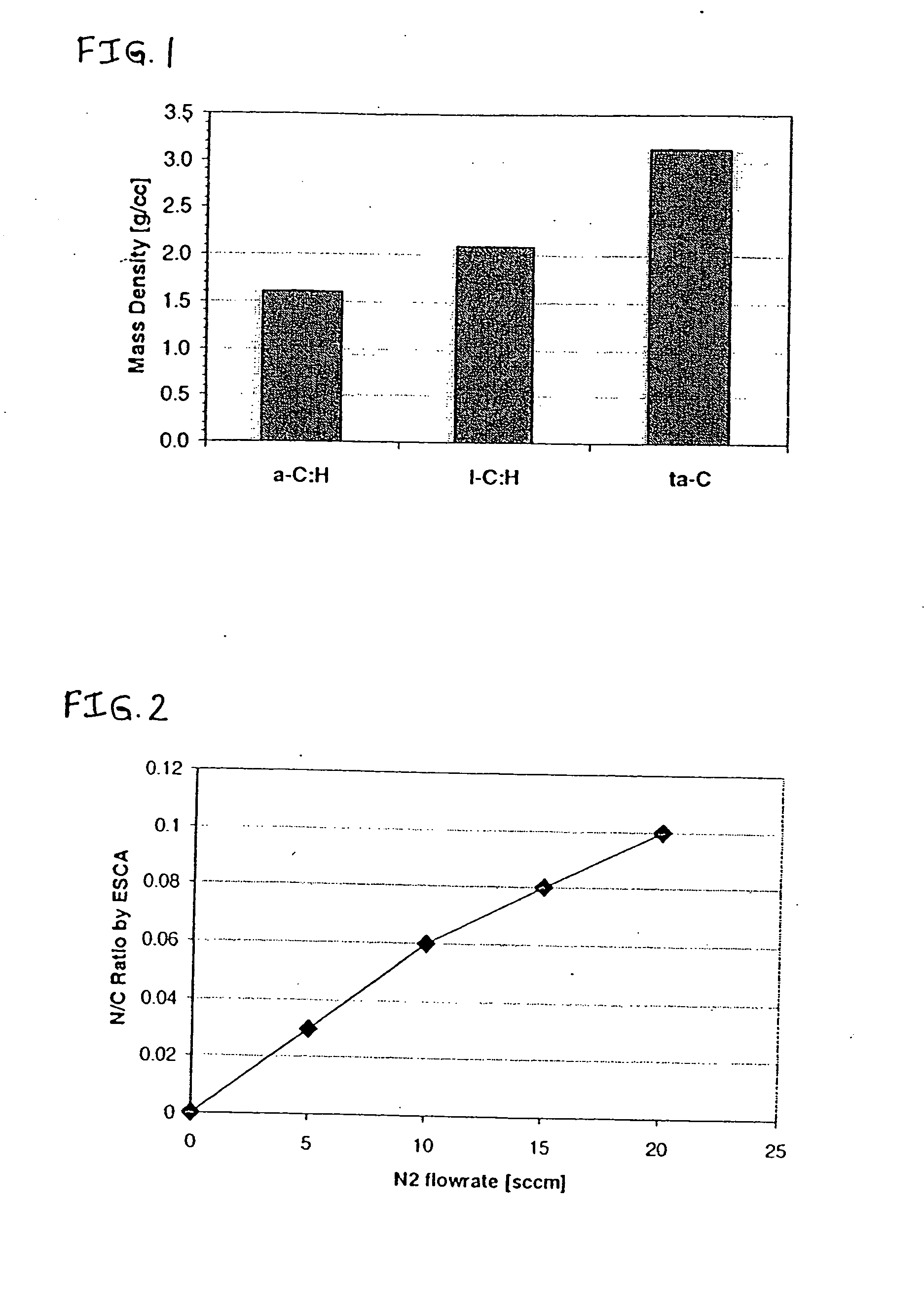Dual-layer carbon-based protective overcoats for recording media by filtered cathodic ARC deposition
a technology of cathodic arc deposition and protective overcoat, which is applied in the field of forming carbon-based protective overcoat layers, can solve the problems of very low hardness of a-c layers produced in such a manner, the inability to operate the disk drive to perform reading and reproducing operations, and the breakage or damage of a-c layers, etc., to achieve high mass density tetrahedral amorphous, improve protective overcoat layers, and improve the effect o
- Summary
- Abstract
- Description
- Claims
- Application Information
AI Technical Summary
Benefits of technology
Problems solved by technology
Method used
Image
Examples
Embodiment Construction
[0043] The present invention addresses and solves problems attendant upon the formation of ultra-thin, abrasion and corrosion-resistant protective overcoat layers suitable for use with high areal density magnetic recording media, such as are employed in hard drive applications, while maintaining full compatibility with all mechanical and electrical aspects of conventional disk drive technology. In addition, the present invention enjoys utility in the formation of ultra-thin, abrasion and corrosion-resistant protective overcoat layers required in the manufacture and use of thin film-based, ultra-high recording density magneto-optical (MO) data / information storage and retrieval media in disk form and utilizing conventional Winchester disk drive technology with laser / optical-based read / write transducers operating at flying heights on the order of a few micro-inches above the media surface.
[0044] Specifically, the present invention is based upon recognition by the inventors that novel ...
PUM
| Property | Measurement | Unit |
|---|---|---|
| pressure | aaaaa | aaaaa |
| corrosion resistant | aaaaa | aaaaa |
| mass density | aaaaa | aaaaa |
Abstract
Description
Claims
Application Information
 Login to View More
Login to View More - R&D
- Intellectual Property
- Life Sciences
- Materials
- Tech Scout
- Unparalleled Data Quality
- Higher Quality Content
- 60% Fewer Hallucinations
Browse by: Latest US Patents, China's latest patents, Technical Efficacy Thesaurus, Application Domain, Technology Topic, Popular Technical Reports.
© 2025 PatSnap. All rights reserved.Legal|Privacy policy|Modern Slavery Act Transparency Statement|Sitemap|About US| Contact US: help@patsnap.com

